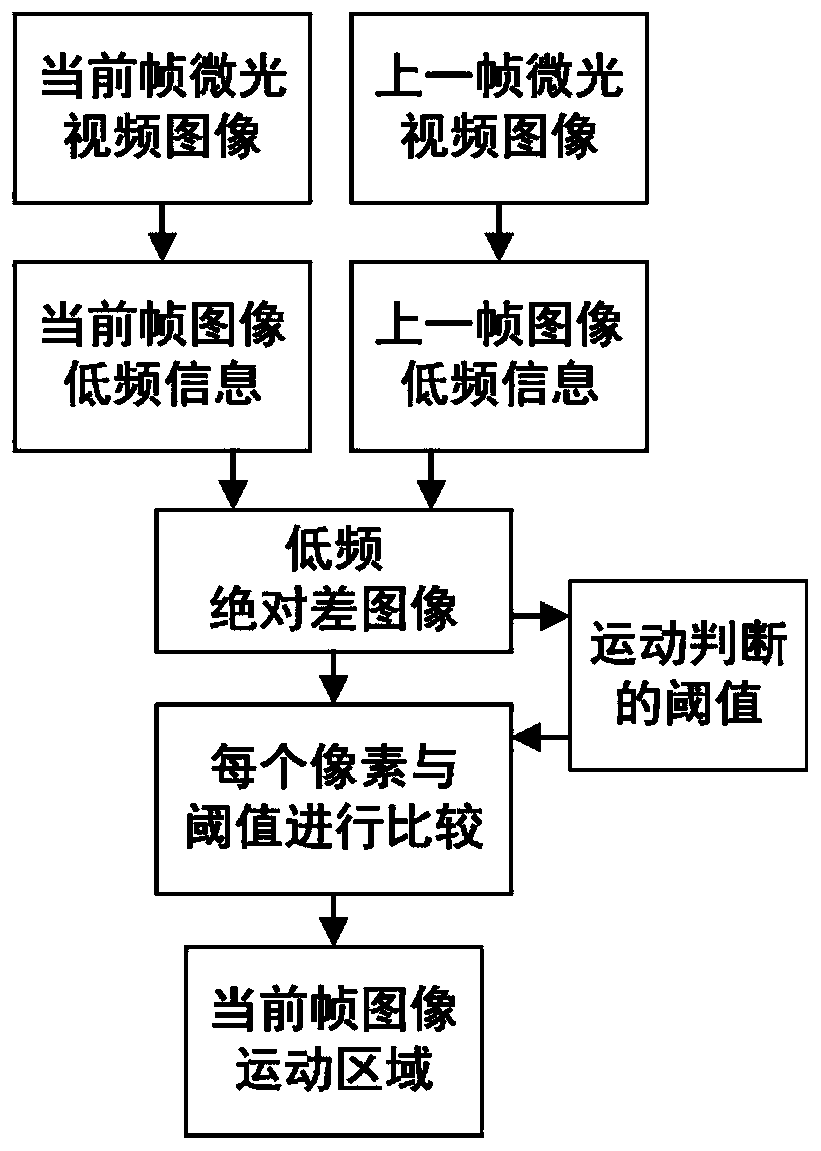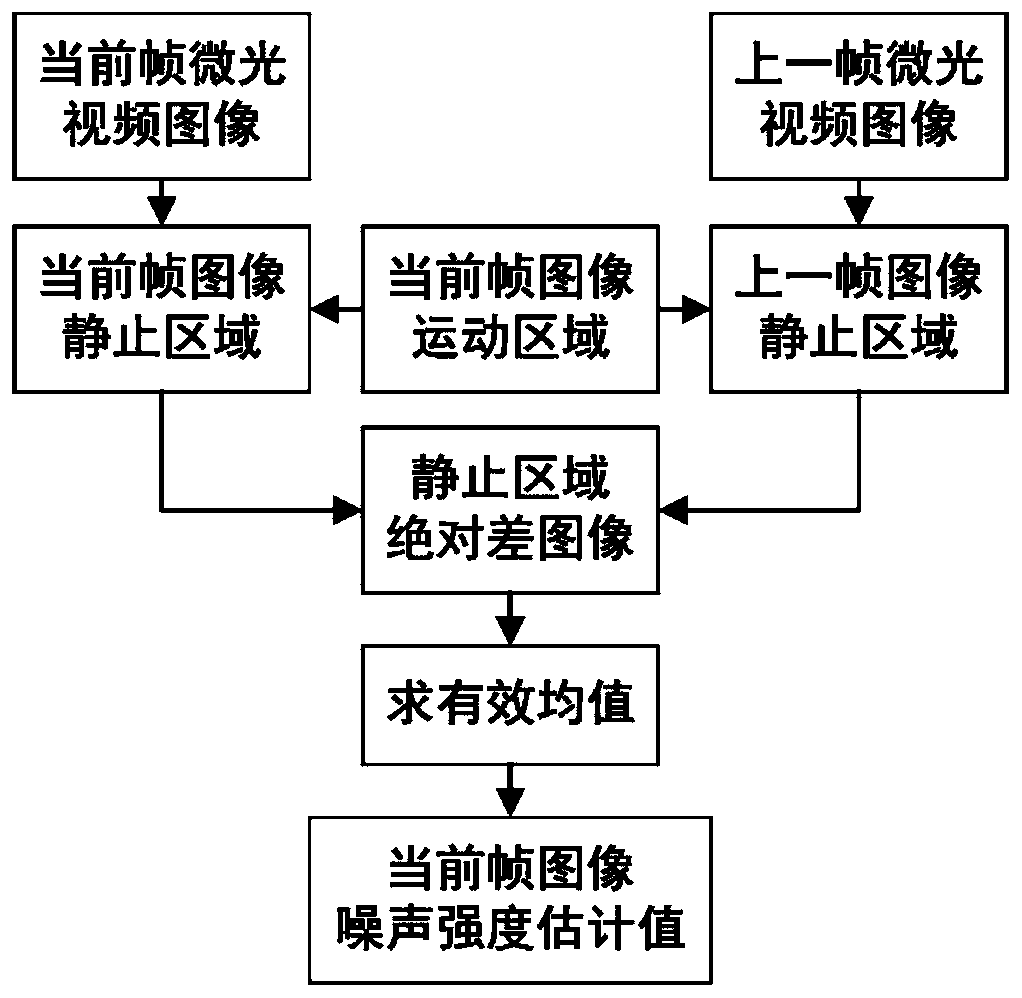An Adaptive Noise Reduction Method for Low-light Video Images Based on Gradient-Guided Filtering
A video image and guided filtering technology, which is applied in the field of image processing, can solve problems such as large amount of computation, lower image quality, and complex algorithms, and achieve the effects of improving the effect of filtering and noise reduction, improving image quality, and improving signal-to-noise ratio
- Summary
- Abstract
- Description
- Claims
- Application Information
AI Technical Summary
Problems solved by technology
Method used
Image
Examples
Embodiment 1
[0064] Such as figure 1 As shown, a gradient-guided filter-based adaptive noise reduction method for low-light video images disclosed in this embodiment includes the following steps:
[0065] Step 1, such as figure 2 As shown, the motion region in the low-light video image is detected.
[0066] Step 1.1: Perform guided filtering on the current low-light video image g(x) of the xth frame and the previous low-light video image g(x-1) respectively, and use the input image to be filtered as the guiding image, and obtain the current The low-frequency information g of the frame and the previous frame of the video image L (x) and g L (x-1). Wherein, the filtering radius r=6, and the filtering smoothing coefficient λ=0.4.
[0067] Step 1.2, obtain the low-frequency image information g of the current frame L (x) and the previous frame of low-frequency image information g L The difference between (x-1), and take the absolute value, according to the formula (1) to get the low-fre...
Embodiment 2
[0085] Such as figure 1 As shown, a method for adaptive noise reduction of low-light video images based on gradient-guided filtering disclosed in this embodiment includes detecting motion areas of low-light video images, estimating the noise of low-light video images, and then performing adaptive gradient Guided filtering and iterative guided filtering processing to obtain the final filtered output image. The signal-to-noise ratio of the low-light video image after the noise reduction processing in this embodiment is significantly improved, and the image quality is significantly improved. At the same time, almost no human intervention is required, and adaptive noise reduction can be quickly realized, which has a good practical application prospect.
[0086] figure 2 A flow chart of a method for detecting a motion region of a low-light video image according to this embodiment is shown. First, input the current xth frame and the previous low-light video image g(x) and g(x-1) ...
PUM
 Login to View More
Login to View More Abstract
Description
Claims
Application Information
 Login to View More
Login to View More - R&D
- Intellectual Property
- Life Sciences
- Materials
- Tech Scout
- Unparalleled Data Quality
- Higher Quality Content
- 60% Fewer Hallucinations
Browse by: Latest US Patents, China's latest patents, Technical Efficacy Thesaurus, Application Domain, Technology Topic, Popular Technical Reports.
© 2025 PatSnap. All rights reserved.Legal|Privacy policy|Modern Slavery Act Transparency Statement|Sitemap|About US| Contact US: help@patsnap.com



